
The Sagrada Familia, a masterpiece designed by the renowned architect Antoni Gaudí, stands as a testament to the fusion of art and architecture in Barcelona. Its intricate design, characterized by organic forms and vibrant colors, captivates millions of visitors each year, making it one of the most iconic structures in the world.
Among its many stunning features, the towers rise majestically above the city skyline, representing the spiritual aspirations of the basilica. Known as The Majestic Towers of Sagrada Familia: A Barcelona Icon, these towering structures embody Gaudí's visionary approach, blending Gothic and Art Nouveau styles to create a unique architectural wonder that continues to inspire awe and reverence.
The Architectural Marvel of Sagrada Familia Towers
The architectural marvel of the Sagrada Familia towers not only dominates the skyline of Barcelona but also serves as a beacon of Gaudí's innovative vision. With their intricate facades and soaring heights, the towers are especially notable for their symbolic representation of the twelve apostles. Each tower is uniquely designed, showcasing Gaudí's commitment to blending nature with spirituality, which is fundamental to the basilica's overall theme.
Gaudí's design philosophy is exemplified in the towers through several key elements:
- Height and Scale: The tallest tower, dedicated to Jesus Christ, will reach an impressive height of 172.5 meters.
- Natural Forms: Inspired by nature, the towers mimic the shapes of plants and flowers, creating an organic feel.
- Color and Light: The use of colored tiles and glass within the structures allows light to filter through, adding a mystical quality to the basilica.
In addition to their aesthetic appeal, the towers illustrate advanced engineering techniques. The use of hyperbolic paraboloids and other geometric shapes enhances both structural integrity and visual allure. This innovative approach has allowed the Sagrada Familia to withstand the test of time while continuing to evolve, ensuring that it remains a Barcelona icon for generations to come.
Moreover, the Sagrada Familia towers stand as a representation of Gaudí's deep religious faith, each peak symbolizing a connection to the divine. The ongoing construction, which began in 1882, reflects the enduring spirit of collaboration and craftsmanship, as artisans and architects from around the world contribute to this monumental project. Ultimately, the towers of Sagrada Familia encapsulate a unique blend of artistry, faith, and engineering that defines this UNESCO World Heritage site.
Exploring the Symbolism Behind the Towers of Sagrada Familia
The towers of the Sagrada Familia are not merely architectural feats; they are imbued with profound symbolism that reflects Gaudí's visionary thought. Each tower is representative of a different aspect of the Christian faith, with a particular emphasis on the life of Jesus Christ and his apostles. This connection is visually articulated through the unique heights and designs of the towers, each serving as a narrative element in the larger story of the basilica.
One can explore the rich symbolism behind the towers through several key themes:
- Divine Connection: The tallest tower, dedicated to Jesus Christ, signifies his ultimate authority and divine nature.
- Apostolic Representation: The remaining towers honor the twelve apostles, forming a spiritual community that is integral to the basilica's identity.
- Natural Influence: Elements resembling flora and fauna in the tower designs represent growth, life, and the beauty of creation, emphasizing Gaudí's belief in nature as a manifestation of the divine.
Furthermore, the intricate details of the towers serve as a visual sermon, conveying messages of faith through their elaborate sculptures and mosaics. Each element is meticulously crafted to evoke a sense of spirituality and contemplation, inviting visitors to engage with the deeper meaning behind Gaudí's work. The interplay of light and color enhances this experience, as sunlight filters through the stained glass, creating a kaleidoscope of hues that transforms the interior space.
In summary, the towers of the Sagrada Familia are not only stunning architectural achievements but also serve as profound symbols of faith and creativity. Their ongoing construction embodies the enduring spirit of collaboration and craftsmanship, as artisans continue to bring Gaudí's vision to life. Through their heights and intricate designs, these towers stand as a testament to the intersection of art, faith, and engineering, making the Sagrada Familia an unparalleled icon of Barcelona.
A Guide to the Iconic Facades of Sagrada Familia
The facades of the Sagrada Familia are not just entrances; they are vibrant storytelling canvases that encapsulate the essence of Gaudí's vision. Each facade represents a distinct narrative and style, showcasing the architect's mastery of form and texture. The three main facades—Nativity, Passion, and Glory—each convey different theological messages, inviting visitors to experience a journey through the life of Christ.
Visitors can appreciate the unique characteristics of each facade through the following highlights:
- Nativity Facade: Celebrating the birth of Jesus, this facade features intricate sculptures of biblical figures and natural elements that reflect Gaudí's admiration for life and creation.
- Passion Facade: Characterized by its stark and angular design, it symbolizes the suffering and crucifixion of Christ, conveying a sense of solemnity and reflection.
- Glory Facade: Currently under construction, this facade will depict the glory of Jesus and the pathway to heaven, showcasing an elevated sense of spirituality and aspiration.
Each facade employs a variety of materials and techniques that enhance their visual impact. Gaudí's use of natural stone, mosaics, and colored glass allows for a dynamic interplay of light and shadow, bringing the sculptures to life. The facades collectively serve as a profound expression of faith and artistry, inviting both worship and wonder from all who behold them.
To better understand the architectural significance and themes presented in these facades, the following table summarizes their key elements:
| Facade | Theme | Design Features |
|---|---|---|
| Nativity | Birth of Christ | Intricate sculptures, natural motifs, vibrant colors |
| Passion | Suffering of Christ | Angular shapes, somber tones, stark contrasts |
| Glory | Ascension and Heaven | Elevated structures, light-filled spaces, divine symbols |
In conclusion, the facades of the Sagrada Familia are a testament to Gaudí's innovative spirit and deep religious convictions. Each facade not only contributes to the overall aesthetic of the basilica but also serves as a profound narrative device that invites visitors to engage with the spiritual themes embedded in its design. Through their intricate details and symbolic representations, these facades establish the Sagrada Familia as a true icon of Barcelona, reflecting the harmony between art, faith, and heritage.
The History of Sagrada Familia and Its Majestic Towers
The history of the Sagrada Familia is as intricate as its design, beginning with its foundation stone laid in 1882. Initially commissioned by architect Francisco de Paula del Villar, the project took a dramatic turn when Antoni Gaudí took over in 1883. His vision transformed it into a unique blend of Gothic and Art Nouveau styles, marked by its majestic towers that symbolize the aspirations of faith and spirituality. The basilica's construction remains ongoing, with the completion date projected for 2026, marking the centenary of Gaudí's death.
Gaudí's innovative approach to architecture not only defined the Sagrada Familia but also revolutionized the craft itself. The towers, designed to reach varying heights, reflect significant religious figures and concepts. Each tower is adorned with intricate details that tell a story of faith, inviting visitors to engage with the rich historical narrative embedded within the structure. The ongoing construction has attracted skilled artisans and laborers from around the world, showcasing a collective commitment to preserving Gaudí's original vision.
The Sagrada Familia's towers serve as a physical representation of the interconnectedness of nature and spirituality. Gaudí's design ethos emphasized organic forms, drawing inspiration from the natural world. This connection is evident in the towers’ shapes, which mimic elements like tree trunks and flowers, emphasizing the idea that nature is a manifestation of the divine. Such elements not only enhance the aesthetic appeal of the basilica but also create a deeper spiritual resonance for visitors.
As the Sagrada Familia continues to rise toward the sky, its towers stand as enduring symbols of perseverance and faith. The architectural complexity, combined with the rich history of collaboration among artisans, reflects the essence of Barcelona itself—an ever-evolving city that honors its past while embracing the future. The majestic towers not only define the skyline of Barcelona but also represent the unwavering spirit of creativity and devotion that Gaudí instilled in this architectural masterpiece.
Visiting the Sagrada Familia: Tips for Tourists
When visiting the Sagrada Familia, it's essential to plan ahead to maximize your experience. To avoid long lines, purchasing tickets online is highly recommended. This not only saves time but also ensures entry at your preferred time. Additionally, consider opting for a guided tour to gain deeper insights into Gaudí's vision and the basilica's intricate details, enhancing your appreciation of this Barcelona icon.
Timing your visit can significantly enhance your experience. Early morning or late afternoon visits offer the advantage of fewer crowds and stunning lighting for photographs. The interplay of sunlight through the stained glass is particularly captivating during these times, providing a more serene atmosphere for exploration and contemplation.
Don't forget to explore the surrounding area as well. The Sagrada Familia is located near several other attractions, such as the beautiful Parc de la Ciutadella and the vibrant Gràcia neighborhood. You can make the most of your trip by combining visits to these sites, allowing you to experience the rich culture and architecture of Barcelona. Here are some key points to remember:
- Nearby Attractions: Consider visiting Casa Batlló or La Pedrera, both designed by Gaudí, for a complete Gaudí experience.
- Public Transport: Utilize the extensive metro and bus systems to navigate the city easily.
- Dining Options: Explore nearby cafes and restaurants to enjoy local cuisine after your visit.
Finally, be mindful of the dress code when visiting the Sagrada Familia. As a sacred space, modest attire is encouraged, and visitors are asked to maintain a respectful demeanor. By following these tips, you can ensure a fulfilling visit to this architectural masterpiece, appreciating both its beauty and the spiritual significance it holds.
The Influence of Antoni Gaudí on Sagrada Familia's Towers
Antoni Gaudí's influence on the Sagrada Familia's towers is profound, as each structure reflects his innovative architectural philosophy. He envisioned the towers not just as vertical elements but as vital components of a larger narrative, intertwining spirituality and nature. This is evident in the unique designs of each tower, which are meant to represent different aspects of the Christian faith, thereby enhancing the basilica's overall message.
One of the most notable aspects of Gaudí's approach is his use of geometric forms to create visually striking designs. The towers incorporate hyperbolic paraboloids and other complex shapes, which not only contribute to their aesthetic appeal but also serve to strengthen their structural integrity. This method exemplifies Gaudí's belief that art and engineering are inextricably linked, allowing the Sagrada Familia to stand as a testament to both creativity and technical prowess.
Gaudí's inspiration from nature can be seen in the organic forms of the towers, mimicking natural elements such as trees and flowers. This connection emphasizes his belief that nature is a direct manifestation of the divine, a theme that is central to the Sagrada Familia. The towers, with their intricate details and natural motifs, invite visitors to reflect on their spiritual journey while appreciating the beauty around them.
In summary, the influence of Antoni Gaudí on the towers of the Sagrada Familia manifests through a harmonious blend of architecture, symbolism, and spirituality. His visionary designs not only set the basilica apart as an architectural wonder but also establish it as a lasting symbol of faith and creativity. As construction continues, the towers remain a dynamic representation of Gaudí's genius, ensuring that this Barcelona icon will inspire future generations.
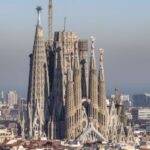 Unlock the Wonders of Barcelona with Sagrada Familia Tickets!
Unlock the Wonders of Barcelona with Sagrada Familia Tickets!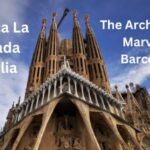 Discover the Architectural Marvel of Barcelona with a Sagrada Familia Walking Tour
Discover the Architectural Marvel of Barcelona with a Sagrada Familia Walking TourIf you want to know other articles similar to The Majestic Towers of Sagrada Familia: A Barcelona Icon you can visit the category WHERE YOU CAN GO.
Leave a Reply

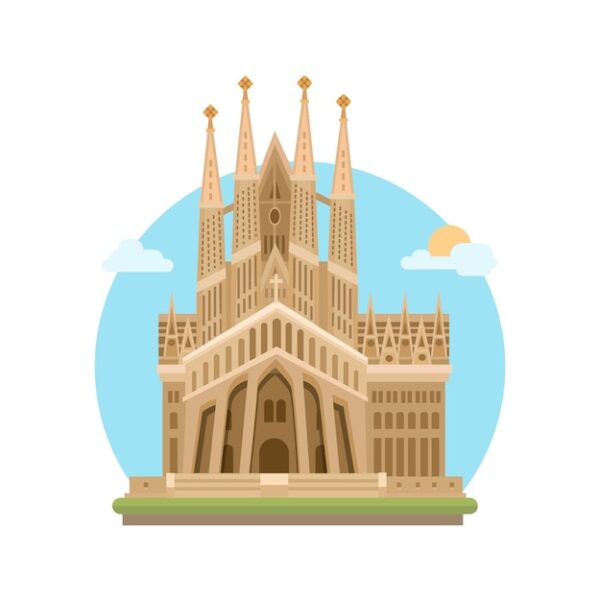
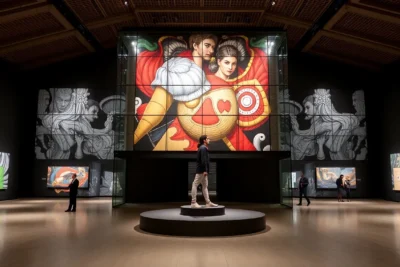
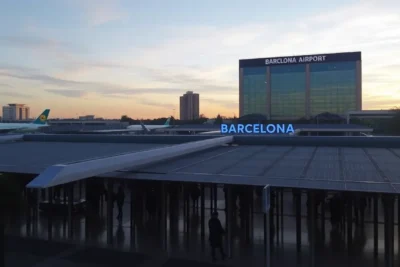

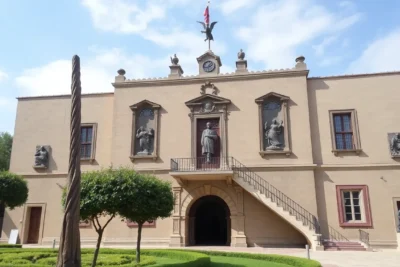


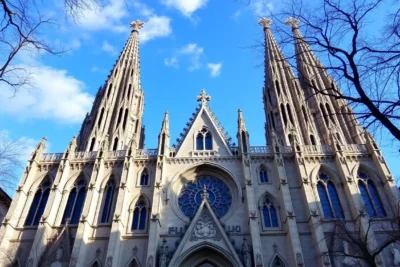

Read more!